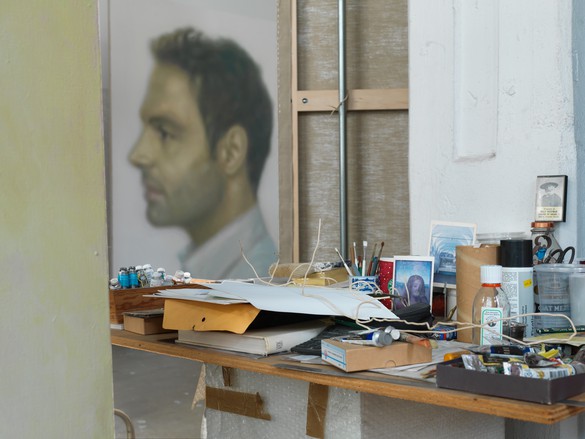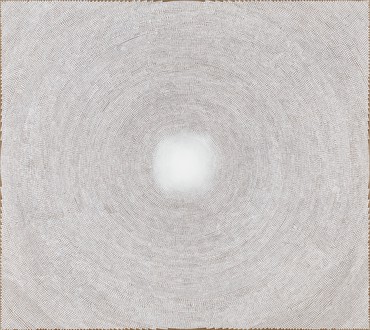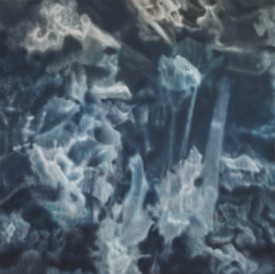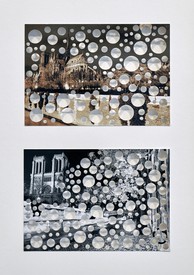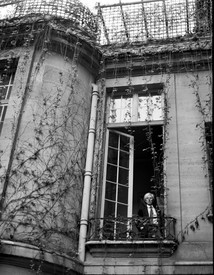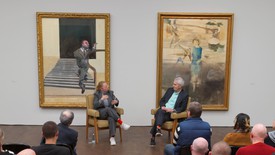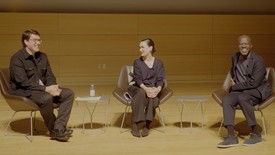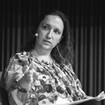
Alison McDonald has been the director of publications at Gagosien since 2002. During her tenure she has worked closely with Larry Gagosien to shape every aspect of the gallery’s extensive publishing program and has personally overseen more than six hundred publications dedicated to the gallery’s artists. In 2020, McDonald was included in the Observer’s Arts Power 50.
Alison McDonaldFirst and foremost, in my mind, you are a painter of portraits. However, your work is far more complex than that. For example, when you view the works up close, the portraits seem to disintegrate into abstraction. It is only when you view the works at a distance that they come into focus. How did you start painting portraits, and can you describe how you were able to develop your distinct balance between abstraction and portraiture?
Y.Z. KamiMy mother was a portrait painter, so I have been painting portraits since I was a child. For many years I painted with a sitter in front of me: I would make a drawing first with pencil or charcoal on canvas and then paint with oil. Years later, in the mid-1980s, when I moved to America, I encountered Andy Warhol’s very large portrait of Mao at the Metropolitan Museum of Art, and Chuck Close’s large portraits, as well as Alex Katz and other American artists. And gradually I began to change the size of the heads in my paintings. Prior to that, my experiences with large portraits focused mainly on frescoes and mosaics in the churches of Europe.
It was around the same time that I switched from painting with the sitter to photographing the sitter. Since then I have photographed my sitters and made my paintings by studying the photograph. The size of my canvas gradually increased. The large format allows me to paint with large brushes, which gets the body more involved, and there is a freedom in it that I never felt while painting in small formats.
As the size of the paintings grew larger, the images became a little blurred, and gradually more and more out of focus. The blurrier they became, the more abstract the experience was for the viewer when approaching the work.
AMCDMatthew Collings (from Modern Painters) has noted that the tonality in your paintings is carefully controlled: “All the pictures have the same tonal feel, none jump out, and each picture, even when it’s very large, has a perfect balance of different registers: photographic imagery melting and coalescing, and a mosaic of differently paced animated dabs of muted color that appears to vibrate and shimmer.” How have you developed this approach, and why is it important to the viewer’s experience?
YZKIn Iran, where I grew up, I traveled quite a bit with my family; we saw architecture mostly, old architecture, and the desert landscape is very dry. That dryness from the desert, that kind of landscape and architecture, has always stayed with me. So when I was exposed to fresco paintings in Europe, the kind that you see in churches, the feeling of the surface attracted me, but it was important at the same time to work with oil paint. So developing that balance really took a while. Years of experimentation with material, with oil, with dry pigments, with dusts, and things like that.
AMCDIn many ways what I find to be most intriguing about your work is that it presents what is not seen. Very often your sitters have a downward gaze; they do not look out of the canvas to address the viewer. And yet the sitters always seem to emanate a sense of something much larger than themselves. Perhaps Steven Henry Madoff said it best: “There is something else about these portraits, with their frontal, seemingly impassive, look: the quality of fact about them, of their thingness, that suggests we look at the person in the picture as a totem, or perhaps an artifact, of Being itself.” And, for me, this sense of Being that accompanies your work is perhaps the one element that ties everything in your oeuvre together. Would you agree with that?
YZKYes, I strive to achieve otherness, that transcendental element. However, I find that element can be the most difficult part of my work to describe in words.
AMCDRob Storr wrote about it, and he was very articulate on the matter; even though in the text he claims that he’s not really a believer, he indicates that your work forces him to think about things he might otherwise prefer to avoid. In the London exhibition, you premiered the first portrait you have made of a sitter in profile. How did it come about that you wanted to paint a profile?
YZKYou know, it is a very personal image for me—the very first time I saw the sitter, I saw him in profile, and that profile has stayed in my mind. And that was probably the departure, but for years I’ve wanted to paint a profile. It seemed like quite a challenge, because in profile the ear becomes very prominent in the composition. There is one profile by Cézanne that I greatly admire. It’s an extraordinary profile in which, yes, the ear is very prominent, but the way he painted it, the ear looks like a flower. It’s amazing. It’s among his late portraits, and the degree of abstraction he achieved in the last decade of his work is incredible.
AMCDThinking about your work in its entirety, it is very interesting to me that you work simultaneously on both the portraits and your more abstract works, in the case of this exhibition that would be the Dome paintings. The Dome works are very much abstractions—they recount architecture, which is something you have incorporated into your work in a variety of ways previously: minimalist abstraction and ideas pertaining to spiritual transcendence. It would be interesting for me if you could elaborate on how the Dome paintings connect to the portraits.
YZKThe connection is through light. There is an experience of light in the portraits, as if the sitter is coming out of light or going into light. And in the White Domes, it’s also very much about that experience of light.
AMCDRecently you made your first Black Dome. How did that shift come about, and can you anticipate how it might affect the next stages in the evolution of this series?
YZKThink about it in terms of alchemy. Consider the act of transformation as a journey toward light; the whole process requires purification, and the journey is not possible without passing through a phase that is called nigredo—the first phase of the whole alchemical process, the initial stage of magnum opus. The alchemist in his laboratory would encounter dark states of being, for instance in horrible smells of the metals that he has to burn in order to achieve his goal, which is to get to gold—and that initial state is also called blacker than black. You cannot go toward the light without first passing through darkness, through the “Dark Night of the Soul.” The Black Domes are that moment.
AMCDFormally, the Dome paintings seem to have originated out of the Endless Prayers series, however the Domes do not include texts nor do they directly recall the whirling motions of ritual spinning that is thought to undo the ego in the Mawlavi order of Sufism—founded by the thirteenth-century Persian poet Rumi, who has a notable influence on your work. How do these two bodies of work relate, and how do they differ?
YZKYes, the Domes grew out of the Endless Prayers series. And Endless Prayers grew out of experimentation for sculptures. There was a sculpture that I made for the Istanbul Biennial: It was a Rumi poem, cut into stones, arranged in circles on the ground. That work was the beginning of the Endless Prayers series, where I cut paper with writings from Sufi poets, Arabic prayers, and mystical Hebrew texts, and arranged them into mandalas. For the Domes the texts have been removed, so they almost become more universal—just light. They refer to mosaics and architecture, but they are also not really bricks anymore—just pure, white light.
AMCDPaintings of hands have recently entered your work: These tend to be depictions of hands that communicate an act of spirituality; for example, they are engaged in prayer or centered on the chest, at rest over the heart. Why hands? Why now?
YZKWhen the hand is at rest on the heart, it is a gesture of humility, of love. And then hands in prayer are a more direct image of devotion. In some of my portraits, the figures’ eyes are closed, which can feel like an act of meditation or contemplation. In the White Domes, there is an experience of light. But with hands in prayer, there is faith. And it’s a very universal image associated with many faiths: Hinduism, Buddhism, Christianity, etc.
AMCDAs someone who has followed your work for almost ten years, it is clear to me that repetition is an important part of your practice. You work on paintings of the same sitter in many scales—it’s almost a kind of meditation. Even the Dome series has a meditative quality in its repetition of the “brick” forms that appear on each and every canvas. Is the act of painting at all a spiritual experience for you? Or is this exhaustive level of investigation required as a way to bring your art to new places?
YZKThere is a meditative element to any act of painting. When you’re in front of a canvas, a blank piece of paper, or a surface, there is something at work in your soul, brain, mind. In my case, the repetition of things does have a meditative component to it. But, with portraits, it’s happened many times that when I finish a painting, I often feel there is more to say. There is one sitter that I returned to in various portraits for almost ten years. And over time, I started with part of his body included, but slowly got closer and closer to frame just his face. It also became less focused, more blurry. When I look at one from the beginning against one from much later, they are so different even though it is the same sitter. So there are different reasons to repeat the same sitter over and over.
AMCDAnd in the Domes—
YZKRepetition is a part of them. It’s inherent to them. And that repetition implies infinity.
Artwork © Y.Z. Kami. Y.Z. Kami: Paintings at Gagosien Britannia Street, London, April 9–May 30, 2015
